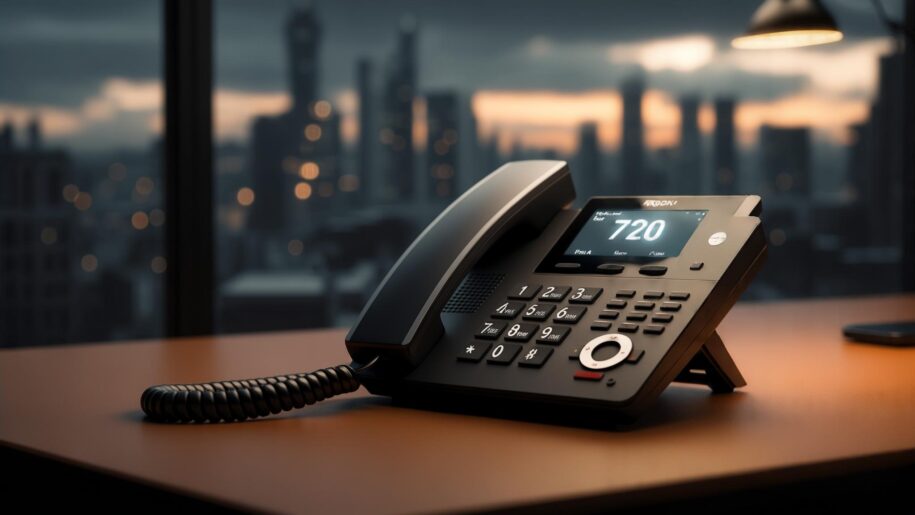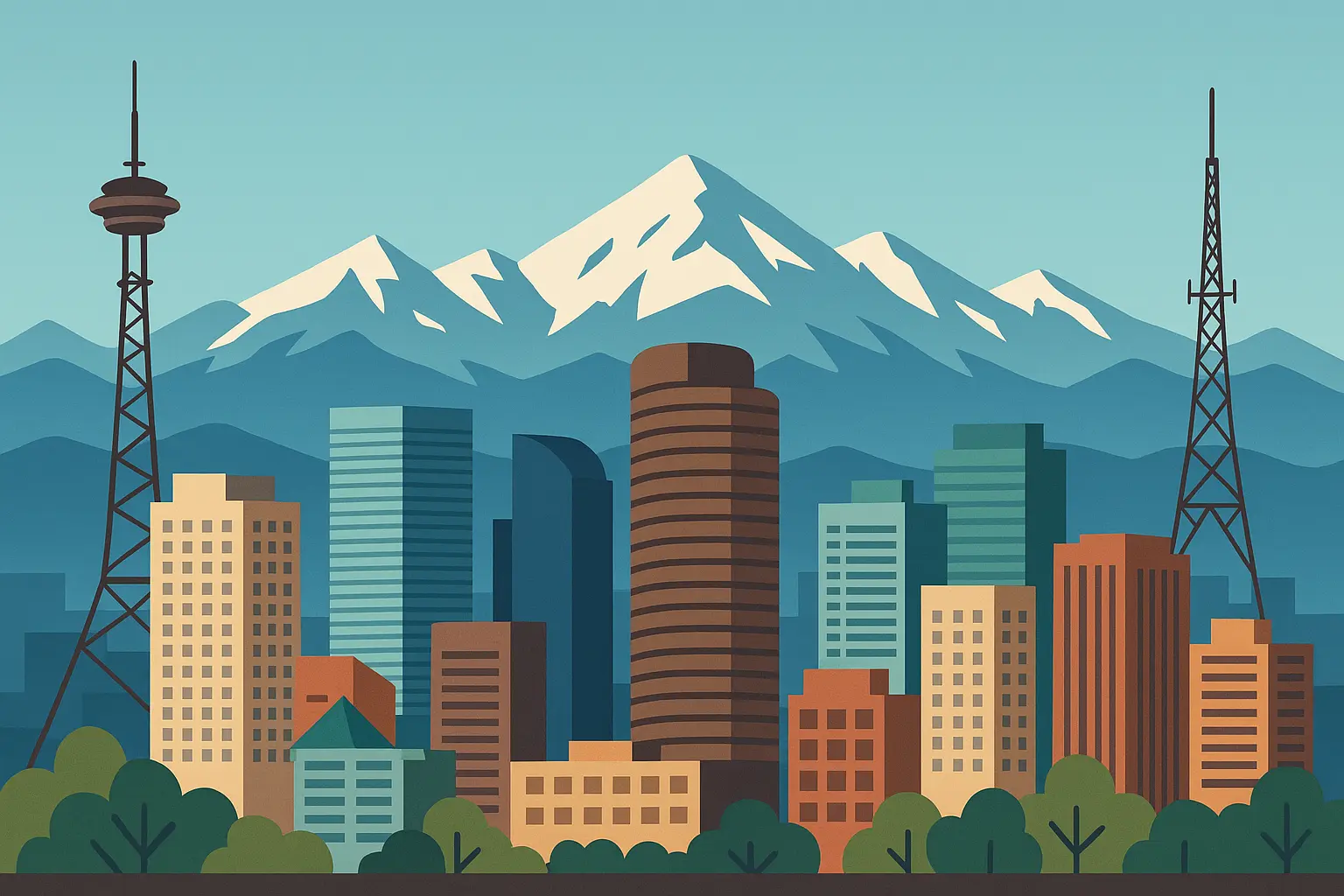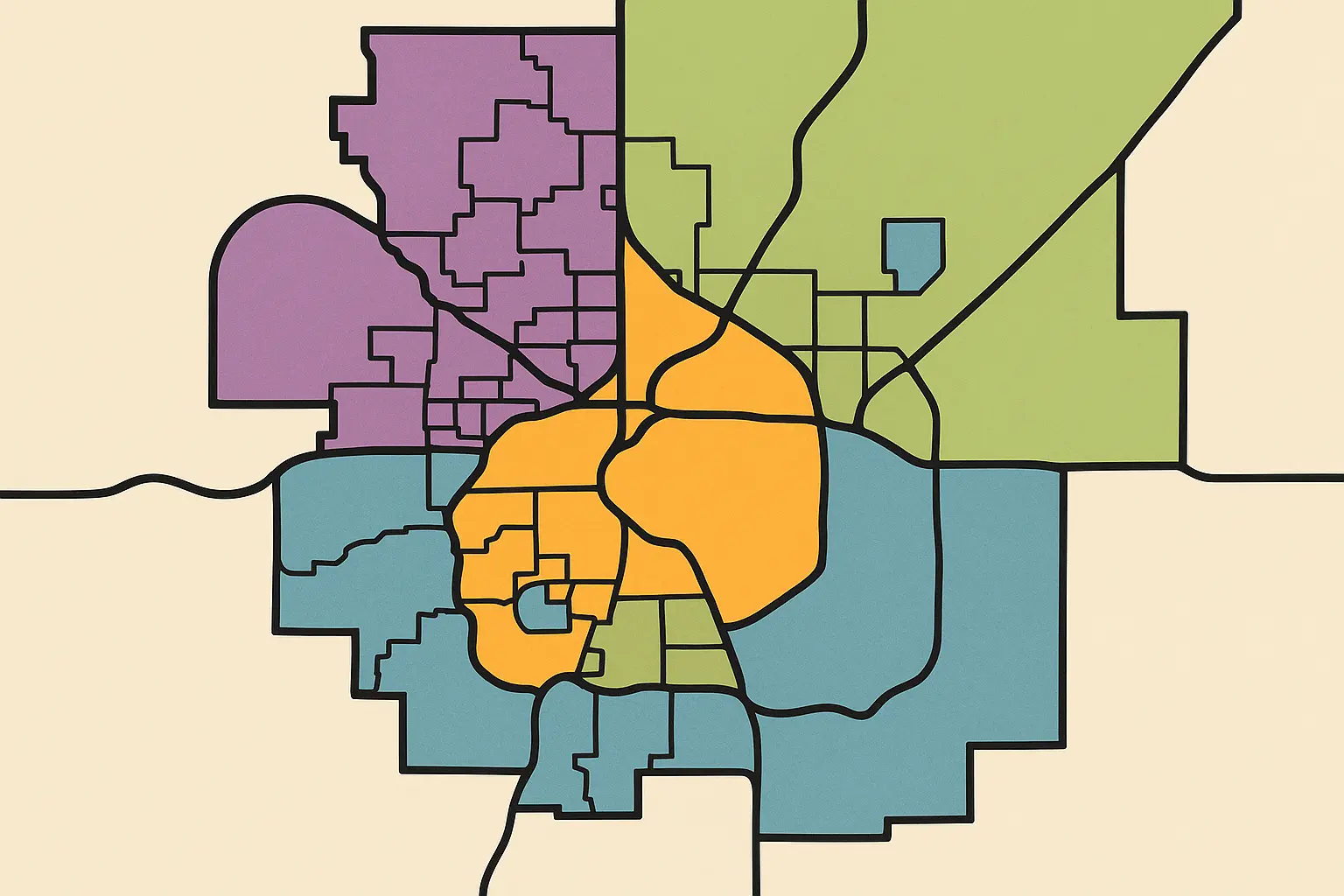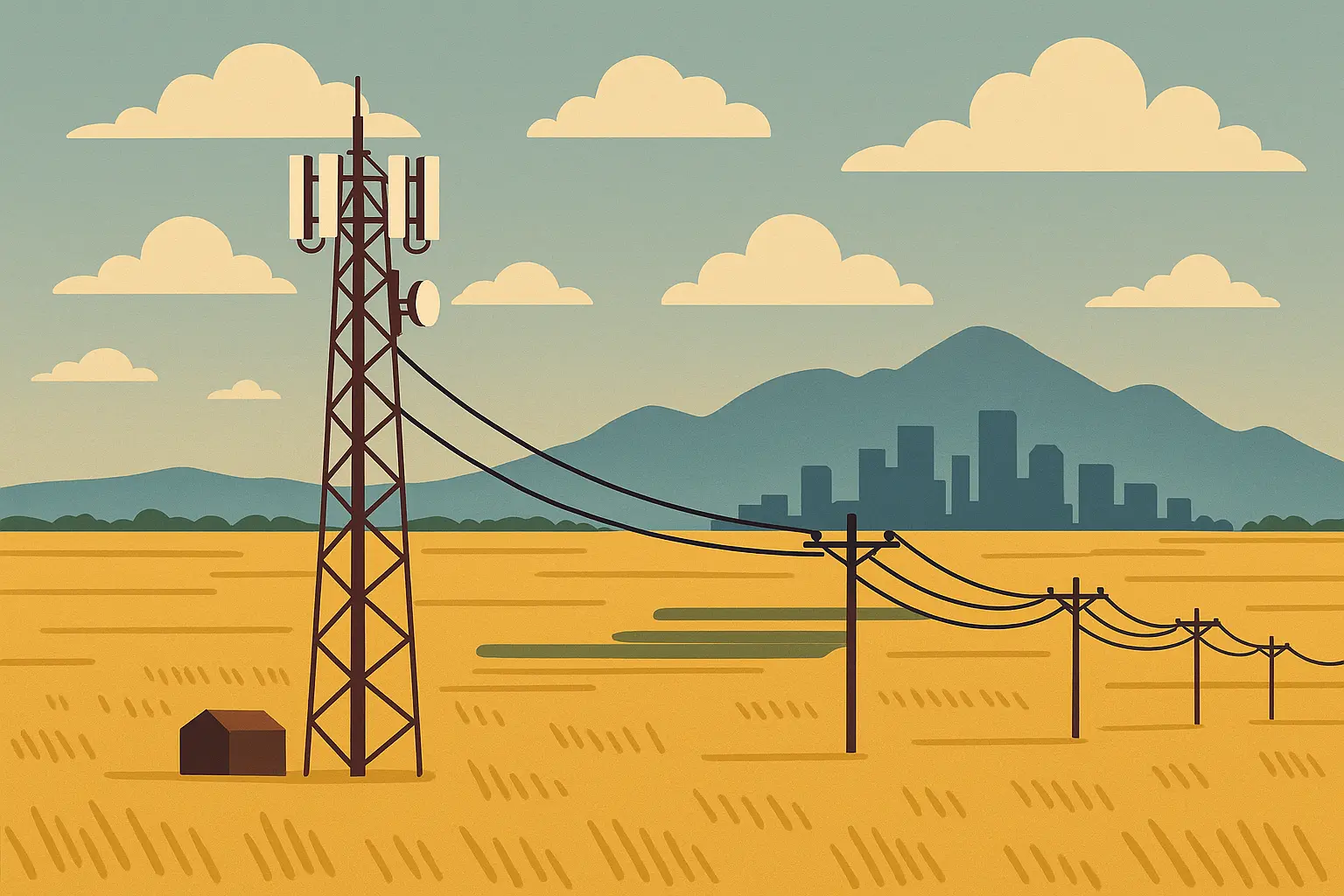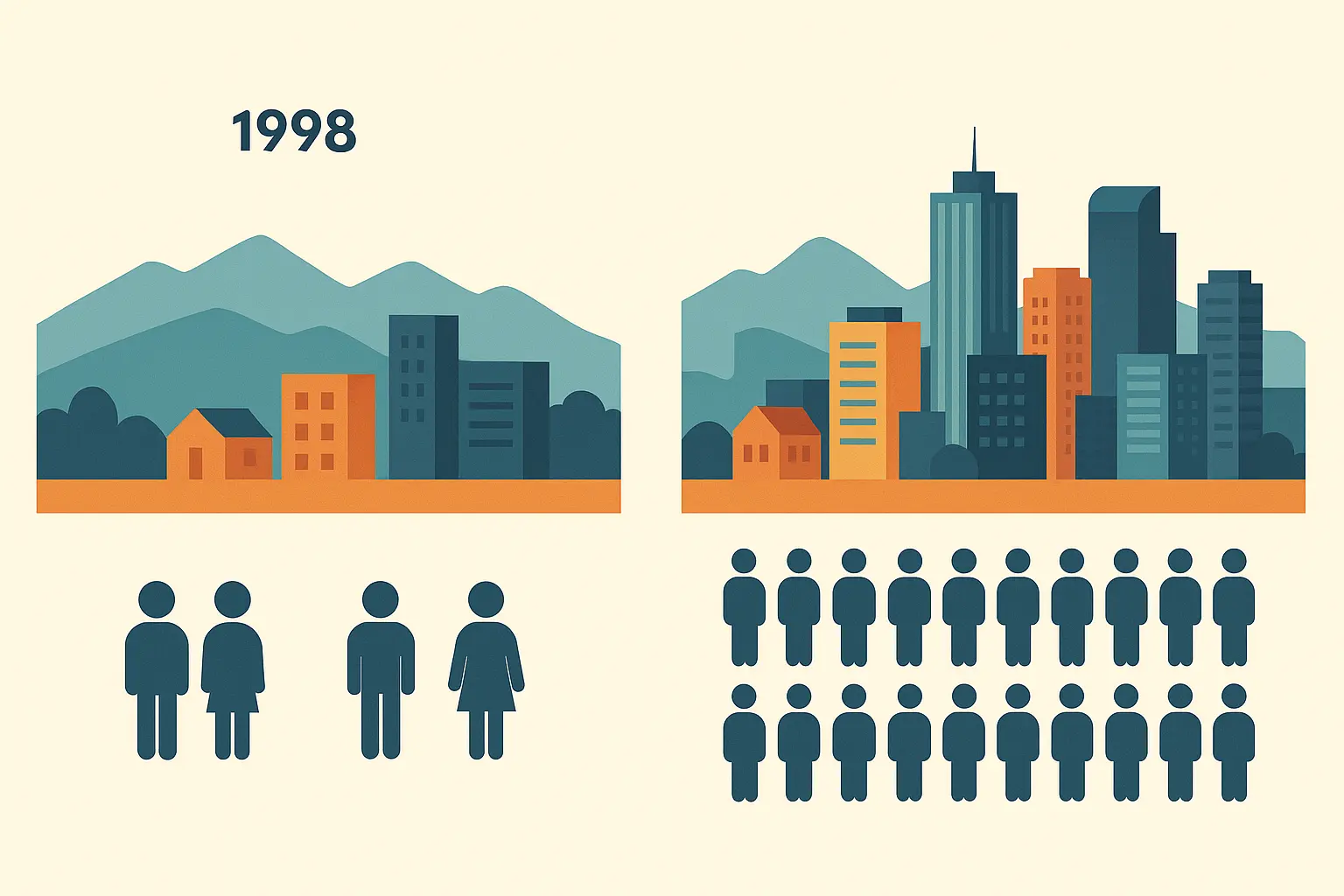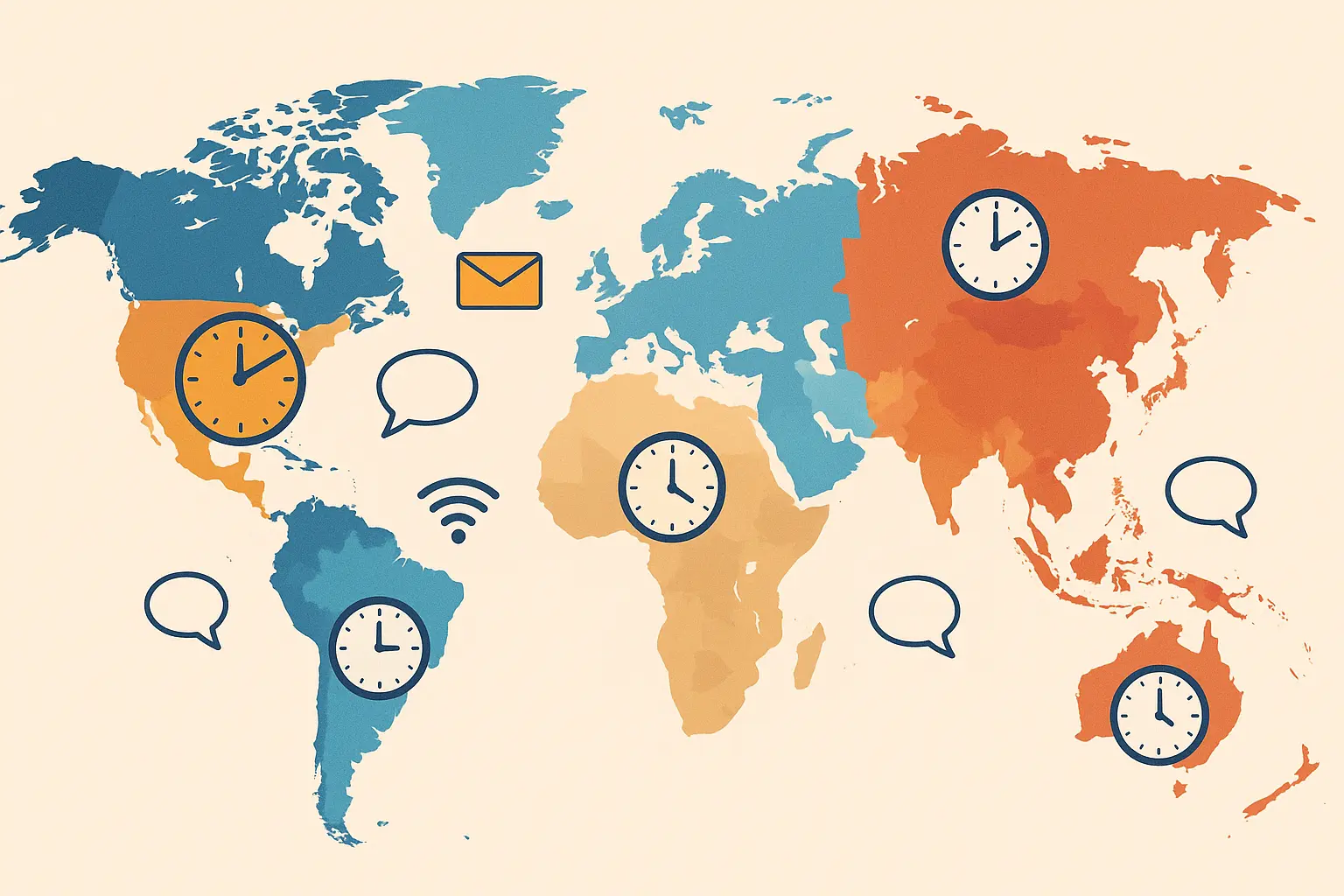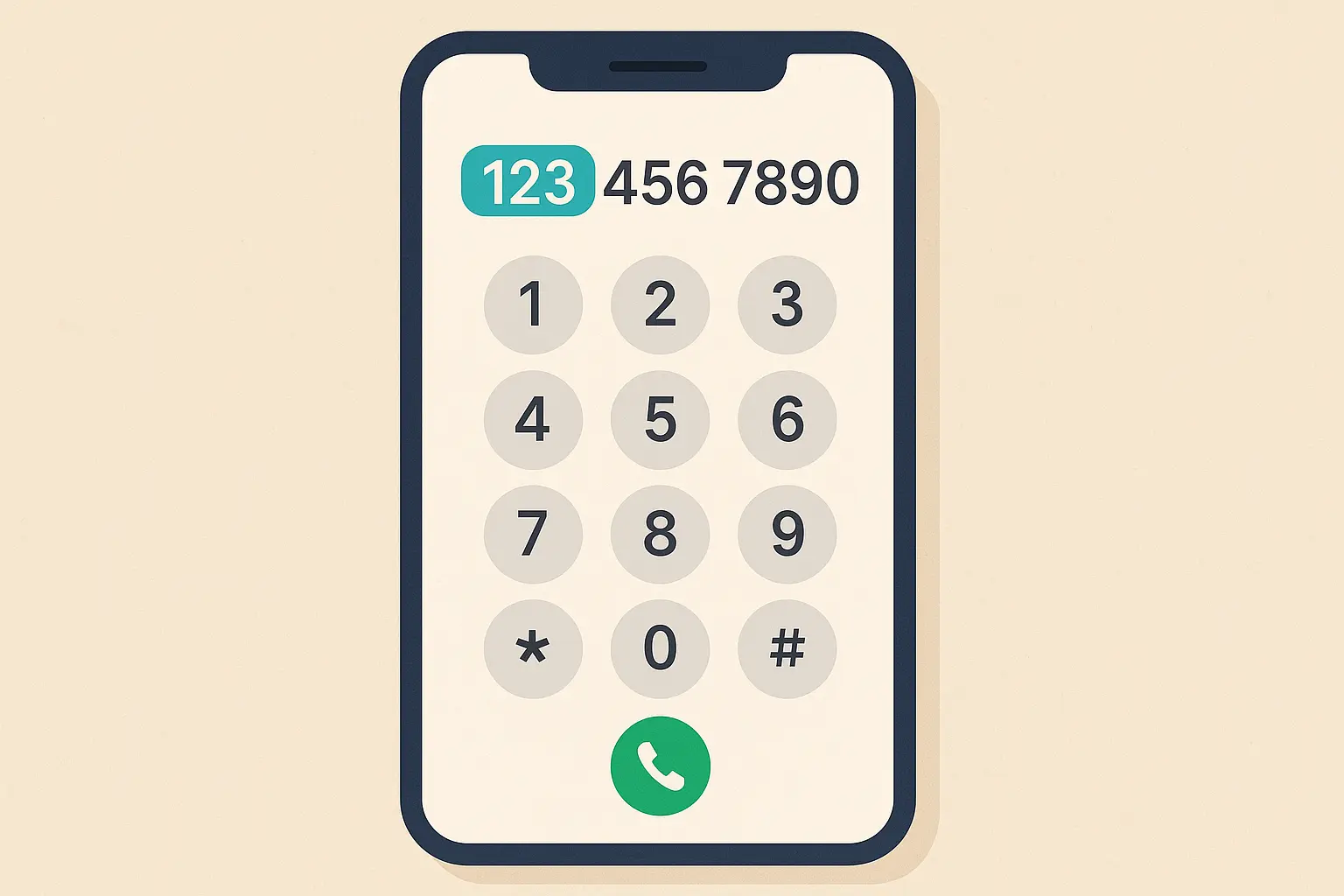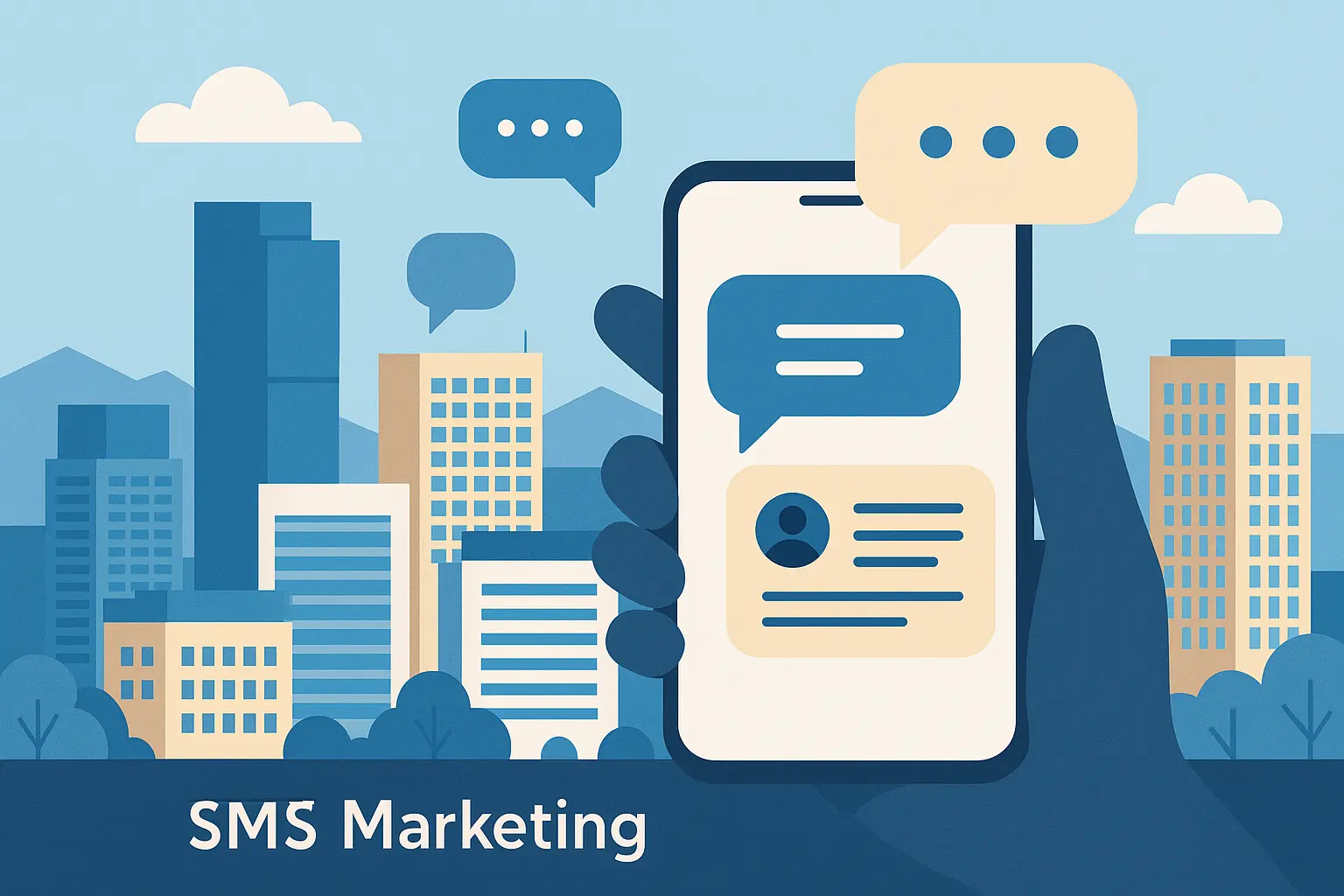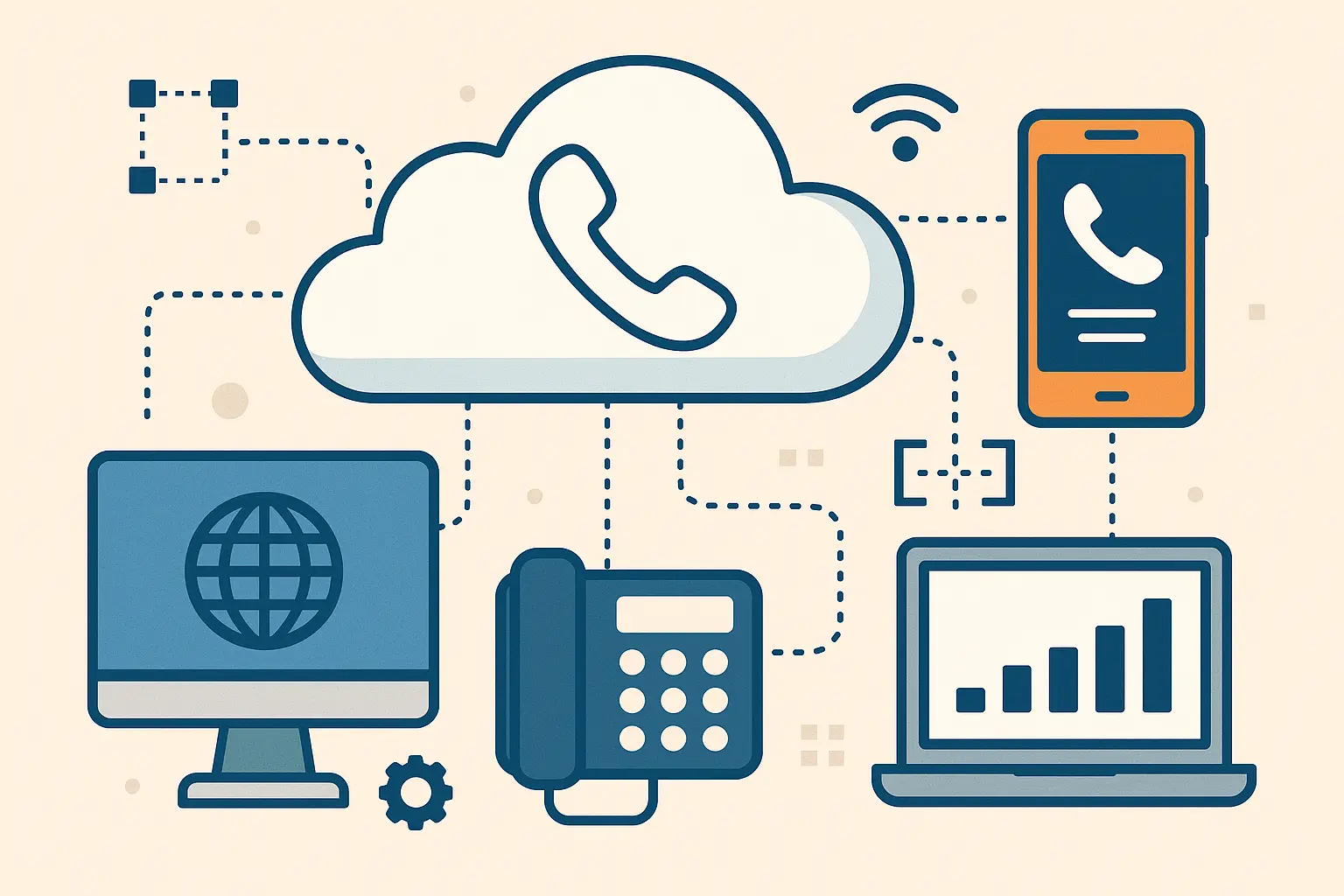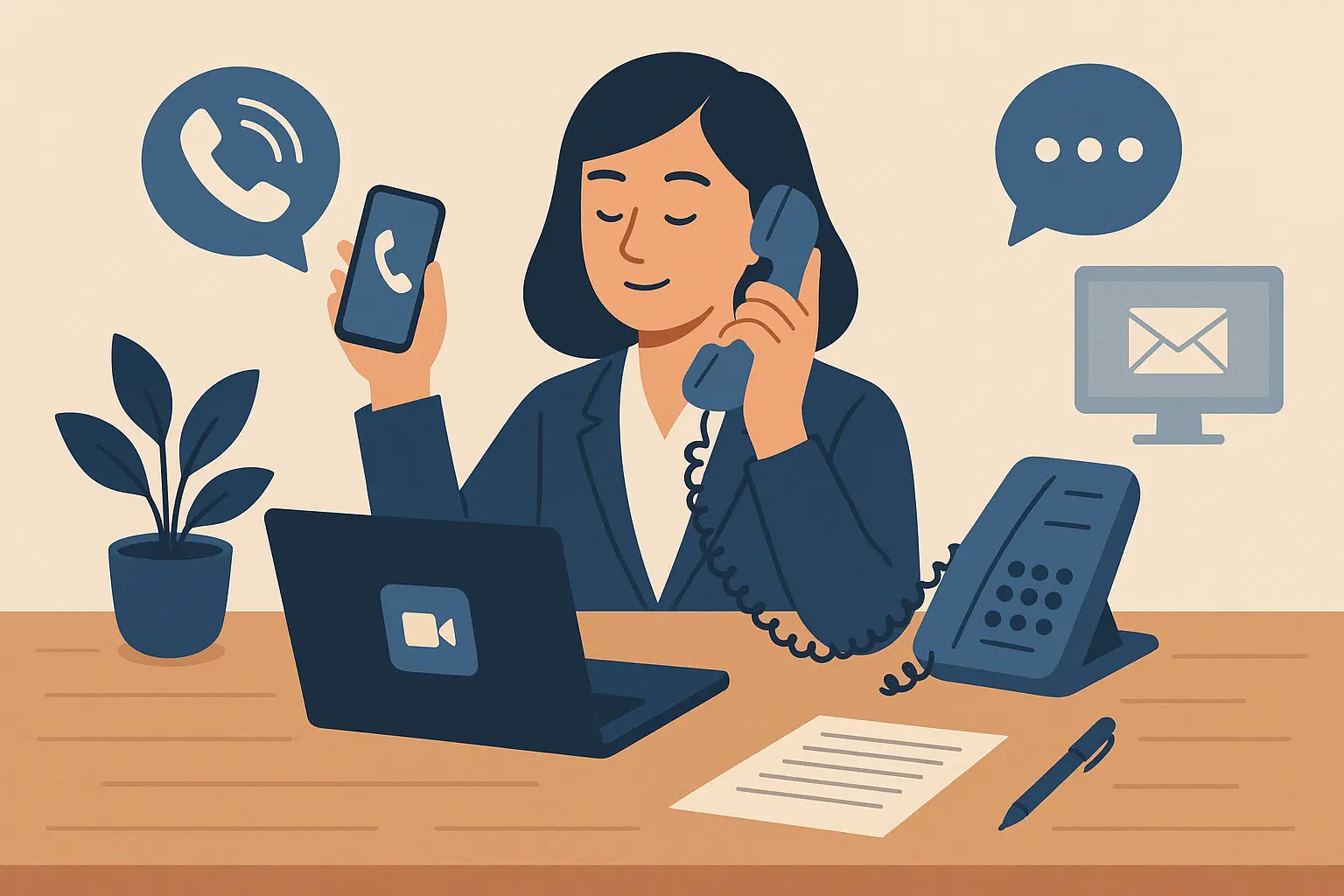Table of Contents
Table of Contents
-
Where Your 720 Number Actually Works (It’s Not Just Denver)
-
The Real Story Behind 720’s Creation in 1998
-
Mountain Time Zone Quirks That Affect Your Calls
-
Why You Need 10 Digits Every Single Time
-
Business Advantages of Having a 720 Number
-
Technical Stuff That Actually Matters
-
Managing Multiple 720 Numbers Like a Pro
TL;DR
The 720 area code covers way more than just Denver – it extends into Boulder County, eastern plains, and select mountain communities. It’s an overlay code introduced in 1998, meaning 720 and 303 serve the exact same geographic area.
You must dial 10 digits for all calls within the region, even local ones. Mountain Time Zone operations mean UTC-7 in winter, UTC-6 in summer. Businesses get instant local credibility with Denver-area customers using 720 numbers. Modern 720 numbers work seamlessly with VoIP, SMS, and can be ported between carriers.
Where Your 720 Number Actually Works (It’s Not Just Denver)
Think 720 only covers downtown Denver? Think again. This area code actually stretches from Boulder County all the way to Colorado’s eastern plains – covering the same massive territory as the original 303 code.
Here’s what most people don’t realize: when 720 launched in 1998, it didn’t create new territory. Instead, it became an “overlay” on top of the existing 303 region. Think of it like having two postal systems serving the same neighborhoods – both codes work in exactly the same places.
The coverage makes sense when you consider how Colorado’s population has grown. These aren’t separate cities anymore – they’re one massive metropolitan area connected by highways, light rail, and shared economic ties.
Here’s the breakdown of Colorado’s area codes:
|
Colorado Area Code |
Geographic Coverage |
Year Introduced |
Population Served |
|---|---|---|---|
|
303 |
Denver Metro, Boulder, Front Range |
1947 |
~3.5 million |
|
720 |
Same as 303 (overlay) |
1998 |
~3.5 million |
|
719 |
Southern Colorado, Colorado Springs |
1988 |
~1.2 million |
|
970 |
Northern/Western Colorado |
1995 |
~800,000 |
|
983 |
Denver Metro (newest overlay) |
2022 |
Growing |
Beyond Denver’s City Limits
Your 720 number works perfectly whether you’re calling Aurora (25 miles southeast), Boulder (30 miles northwest), or Thornton (20 miles north). One Denver business owner was shocked to discover their customers in all these cities could call them as a local call.
Denver metropolitan coverage extends far beyond the city limits, encompassing major suburbs like Aurora, Lakewood, Thornton, and Westminster. The system reflects how Colorado’s population centers have grown and merged over the decades.
A Denver business owner recently discovered their 720 number works perfectly for customers calling from Aurora (25 miles southeast), Boulder (30 miles northwest), and even Littleton (15 miles south) – all without long-distance charges since they’re within the same area code overlay region.
The 303 vs 720 Confusion
Here’s where it gets weird: 720 and 303 cover identical areas. They’re not competing codes or different regions – they’re two names for the same place.
When Denver started running out of phone numbers in the late 90s, officials had two choices: split the area geographically (forcing some people to change their 303 numbers) or add a second code serving the same region. They chose the overlay approach to avoid the nightmare of forcing number changes.
This created lasting confusion. People still ask if 720 numbers are “better” or “newer” than 303. The truth? They’re functionally identical in terms of coverage and capabilities.
The confusion between 303 and 720 became even more complex in 2022 when Colorado introduced the “983 area code” Colorado Sun, adding a third overlay to the Denver metro area as population growth exhausted available numbers.
Surprising Coverage Areas
Eastern Plains: Some rural communities east of Denver get 720 numbers when their phone systems connect through Denver’s infrastructure. You might live three hours from downtown but still have a 720 number.
This coverage isn’t widely advertised but serves specific communities that rely on Denver-based telecommunications infrastructure. Rural Colorado residents sometimes end up with 720 numbers when their local exchanges connect through Denver-area switching systems.
Mountain Towns: Select mountain communities west of Denver also use 720, typically those with strong telecommunications ties to the metro area rather than rural mountain exchanges. These communities often have stronger ties to Denver than to other Colorado regions.
The coverage in mountain towns usually depends on which telecommunications company serves the area and how their infrastructure connects to the broader Colorado network.
Boulder County: Many Boulder residents don’t realize they share the same area code system as downtown Denver, even though the connection makes perfect sense given the economic and commuting patterns between these communities.
The Real Story Behind 720’s Creation in 1998
The birth of 720 wasn’t just about running out of numbers – it marked Colorado’s transformation from a sleepy western state to a booming tech hub that needed serious telecommunications infrastructure.
Pre-720 Colorado
Before 1998, everyone in the Denver area used 303. Period. The system worked fine when Colorado was smaller and less connected. You could dial seven digits for local calls, and life was simpler.
But Colorado was exploding. The tech boom, military expansion, and people fleeing expensive coastal cities created a perfect storm of growth. Denver was adding residents faster than the phone system could keep up.
Before 720 existed, Colorado relied entirely on area code 303, which had served the state since the original North American Numbering Plan implementation. The single area code system worked fine when Colorado’s population was smaller and concentrated in a few key cities.
The growth pressure that led to 720’s creation continues today, with Colorado adding “1.5 million people over the last two decades” Colorado Sun, forcing the state to introduce yet another overlay area code in 2022.
The Messy Transition
The switch to 720 wasn’t gradual – it was a hard cutover that caught everyone off guard. Suddenly, you had to dial 10 digits for every call, even to your neighbor.
Business owners had to reprint thousands of business cards overnight. Phone systems needed reprogramming. Marketing materials became obsolete instantly. The transition brought real headaches for residents and businesses who suddenly had to adapt to new dialing requirements.
Phone companies had to reprogram switching equipment, update billing systems, and train customer service representatives on the new procedures.
What businesses had to update:
-
All printed materials (cards, brochures, signs)
-
Phone system programming for 10-digit dialing
-
Website contact information
-
Staff training on new dialing rules
-
Customer notification campaigns
-
Automated phone systems testing
-
Emergency contact lists
Modern Usage Evolution
Today’s 720 numbers mostly go to mobile phones and internet-based services. The original planners assumed most would be traditional landlines – an assumption that proved completely wrong as cell phones exploded in popularity.
This shift actually worked out perfectly. Mobile users were already used to carrying their numbers between locations, making the area code less tied to specific neighborhoods.
The original 720 rollout assumed most numbers would go to traditional landline services. That assumption proved completely wrong as mobile adoption exploded in the early 2000s.
Federal Oversight and Management
The FCC maintains strict oversight of 720 operations to prevent number exhaustion and ensure fair distribution among telecommunications providers. This regulatory framework continues to evolve with changing technology needs.
720 and 303 operate under identical federal regulations, but the oversight has become more sophisticated since the original implementation. Modern number management involves complex algorithms and predictive modeling to prevent future shortages.
Mountain Time Zone Quirks That Affect Your Calls
Operating in Mountain Time creates unique challenges that East and West Coast callers often miss. Here’s what you need to know about timing your 720 calls.
The Winter/Summer Time Dance
Colorado switches between Mountain Standard Time (winter) and Mountain Daylight Time (summer). During winter months (November through March), 720 numbers operate on Mountain Standard Time (UTC-7), while summer brings Mountain Daylight Time (UTC-6).
This puts Denver two hours behind New York in winter, but the gap becomes more complex during those confusing weeks when different regions switch on different dates. Arizona doesn’t observe daylight saving time, which creates additional complications for 720 users doing business across the Southwest.
The timing sweet spot? Denver businesses can catch East Coast partners in the morning and still have afternoon availability for West Coast calls. But it requires careful planning.
|
Time Zone |
Winter (MST) |
Summer (MDT) |
Difference from EST |
Difference from PST |
|---|---|---|---|---|
|
720/Denver |
UTC-7 |
UTC-6 |
-2 hours |
+1 hour |
|
Business Hours |
9 AM – 5 PM MST |
9 AM – 5 PM MDT |
11 AM – 7 PM EST |
8 AM – 4 PM PST |
Business Coordination Challenges
Denver businesses using 720 numbers must carefully coordinate with East Coast partners who are two hours ahead and West Coast contacts who are one hour behind. This timing dance becomes crucial for meeting scheduling and customer service operations.
A common mistake: scheduling a 2 PM Mountain Time call, forgetting that puts New York partners at 4 PM – right when East Coast offices start winding down.
The 720 time zone positioning actually offers some advantages. You can catch East Coast businesses in the morning and still have afternoon availability for West Coast communications. But it requires careful planning.
When managing business communications across time zones, understanding proper phone number formatting becomes essential for professional correspondence and client contact management.
A Denver consulting firm with a 720 number schedules daily team calls at 10 AM Mountain Time, which works perfectly for their New York office (12 PM EST) and Los Angeles branch (9 AM PST), maximizing participation across all locations.
Why You Need 10 Digits Every Single Time
Forget everything you know about local calling. In the 720/303 overlay region, every call requires 10 digits, even to your next-door neighbor.
The Overlay System Demands It
Since 720 and 303 serve identical areas, phone systems can’t guess which area code you want. Your neighbor might have 303 while you have 720. The system needs both pieces of information to connect your call.
Because 720 and 303 serve identical geographic areas, phone systems can’t determine which area code you’re trying to reach without the full 10-digit number. This requirement applies even for calls within your immediate neighborhood.
This eliminates the old concept of “local” dialing. Distance doesn’t matter anymore – only the complete 10-digit number. The overlay system eliminated the concept of “local” dialing within the Denver metro area. Every call requires the full number, regardless of distance.
Essential updates for 10-digit dialing:
-
Always dial area code + 7-digit number
-
Update stored contacts to include area codes
-
Program speed dial with full 10 digits
-
Train employees on mandatory 10-digit dialing
-
Test all automated dialing systems
-
Update business phone directory listings
720 users who moved from other states often struggle with this requirement. They’re used to 7-digit local dialing and forget the area code, resulting in failed calls and frustration.
International Calling Made Simple
International callers need the US country code (+1) plus the full 10-digit number to reach 720 lines. The format becomes: +1-720-XXX-XXXX.
When people outside the United States need to reach 720 numbers, they must use the US country code (+1) followed by the complete 10-digit number. This standardization helps international callers connect properly to 720 numbers.
The “720 country code” concept confuses some international callers who don’t understand that 720 is a regional identifier within the US system, not a separate country code.
For international business communications, learning how to properly enter phone numbers in international format ensures seamless connectivity with overseas clients and partners.
Carrier Portability Benefits
720 numbers can be transferred between service providers while keeping the same number, allowing users to switch carriers without losing their established phone identity. This portability extends to moving between landline, mobile, and VoIP services.
720 number portability has improved dramatically since the original implementation. What used to take weeks now happens in days, and the process rarely results in service interruptions.
Business Advantages of Having a 720 Number
A 720 number gives Denver-area businesses instant local credibility. Customers see the familiar area code and immediately trust you understand their community.
Local Market Psychology
When Denver residents see a 720 number, they make instant assumptions: this business understands Colorado weather, traffic patterns, and local concerns. It’s not just geography – it’s community membership.
Denver-area businesses gain immediate local market credibility when they use 720 numbers. Customers recognize the local area code and feel more comfortable engaging with businesses that appear to be part of their community.
720 numbers signal geographic proximity to Denver-area customers. When someone sees a 720 area code, they assume the business understands local needs, weather patterns, traffic issues, and community concerns.
The psychology behind 720 recognition runs deeper than simple geographic identification. Colorado residents have developed emotional connections to their area codes that influence purchasing decisions.
Companies operating in the Denver metropolitan area use the 720 area code for their business phone numbers to establish credibility and trust with customers, making it easier to build relationships and drive sales. Source: Ringflow
Marketing Integration That Works
This psychological connection translates to real business results. A Boulder home services company saw response rates jump 40% when they switched from an 800 number to 720 in their radio ads. Listeners preferred calling what appeared to be a local business.
Smart businesses incorporate 720 numbers strategically in advertising campaigns targeting the Denver metropolitan market. The local area code serves as an instant geographic identifier that resonates with target audiences.
720 numbers in radio advertisements get better response rates than toll-free numbers in the Denver market. Listeners subconsciously trust local businesses more than national companies.
Print advertising featuring 720 area codes performs better in Colorado publications. Readers scan for local phone numbers when they’re looking for services, and 720 catches their attention immediately.
A Boulder-based home services company saw a 40% increase in call response rates when they switched from an 800 number to a 720 local number in their radio advertisements, as Denver-area customers preferred calling what appeared to be a local business.
SMS Marketing Capabilities
720 numbers work well for text marketing campaigns, but you still need to follow federal messaging regulations. The local area code doesn’t exempt you from opt-in requirements and compliance procedures.
Denver businesses using 720 phone number systems for SMS marketing campaigns must navigate carrier-specific messaging policies and regulations. Text messaging capabilities vary between providers and number types.
720 numbers work well for SMS marketing, but businesses need to understand compliance requirements and opt-in procedures. The local area code doesn’t exempt you from federal messaging regulations.
Businesses leveraging SMS marketing can enhance their outreach by learning how to forward text messages to email for comprehensive message management across all communication channels.
Technical Stuff That Actually Matters
Behind the scenes, 720 numbers offer sophisticated capabilities that go far beyond traditional phone service.
VoIP Integration Possibilities
Modern 720 numbers work seamlessly with internet-based phone systems, enabling advanced features that transform simple phone numbers into sophisticated communication tools.
Modern 720 numbers work seamlessly with Voice over IP services, enabling advanced features like call forwarding, voicemail-to-email, and integration with business communication systems. This flexibility opens up numerous possibilities for customized phone setups.
720 VoIP integration has revolutionized how Denver businesses handle communications. You can route 720 calls through internet connections, mobile apps, and traditional phone lines simultaneously.
The 720 area code adapts well to cloud-based phone systems. Businesses can maintain their local Denver identity while accessing enterprise-grade features that weren’t available with traditional landline services.
720 numbers support advanced routing rules that can direct calls based on time of day, caller location, or specific keywords in voicemail messages. These capabilities transform simple phone numbers into sophisticated communication tools.
The 720 area code is poised for continued growth and evolution, driven by advances in technology and changing communication needs, with increased adoption of VoIP (Voice over Internet Protocol) technology leading to more flexible and cost-effective phone solutions. Source: Ringflow
Mobile vs Landline Mystery
Unlike some numbering systems, 720 numbers don’t reveal whether they connect to mobile phones, landlines, or internet services. A 720 number could belong to any service type without external indicators.
Unlike some numbering systems, 720 numbers don’t inherently indicate whether they’re assigned to mobile or landline services. This ambiguity requires additional identification methods when you need to determine the service type.
720 number assignments follow federal regulations that prevent easy identification of service types. A 720 number could belong to a smartphone, traditional landline, or VoIP service without any external indicators.
This ambiguity actually provides privacy benefits – callers can’t make assumptions about your service setup based on your number alone.
Carrier Assignment Distribution
Different telecommunications carriers receive blocks of 720 numbers based on demand and regulatory allocation procedures. This distribution system ensures fair access while preventing any single provider from monopolizing available numbers.
720 number blocks get distributed among major carriers like Verizon, AT&T, T-Mobile, and smaller regional providers. The allocation process involves complex federal oversight and predictive modeling to ensure adequate supply.
Managing Multiple 720 Numbers Like a Pro
Whether you’re running a Denver business with multiple phone lines or juggling personal and professional 720 numbers, effective management requires the right tools and strategies.
720 coverage means your multiple numbers all serve the same geographic region, but managing them effectively requires systematic approaches to avoid confusion and missed communications.
Organization Strategies
Multi-Number Management System:
-
Primary Business: 720-XXX-1000 (main customer service)
-
Sales Line: 720-XXX-2000 (lead generation)
-
Support: 720-XXX-3000 (technical issues)
-
After-hours: 720-XXX-9000 (emergency contact)
Clear numbering patterns help customers remember the right line for their needs while making internal management easier.
Multi-Number Management Template:
-
Primary Business Line: 720-XXX-XXXX (main customer service)
-
Secondary Line: 720-XXX-XXXY (sales inquiries)
-
Emergency Line: 720-XXX-XXXZ (after-hours support)
-
Department Lines: Individual 720 numbers for specific teams
-
Forwarding Rules: Automated routing based on time/content
-
Response Protocols: Standardized reply procedures for each line
Cross-Platform Message Management Challenges
Managing text messages across multiple 720 numbers creates complexity without proper systems. Messages can get lost, responses delayed, and important communications overlooked.
Managing SMS communications across multiple 720 numbers creates organizational headaches without proper routing solutions. Messages can get lost, responses delayed, and important communications overlooked in the shuffle.
720 number management becomes exponentially more complex when you’re handling text messages across different devices and platforms. Each 720 line might use different messaging apps or forwarding rules.
720 systems require careful documentation and routing procedures to prevent important messages from disappearing into the wrong inbox or notification system.
For teams managing multiple communication channels, implementing Slack message forwarding can streamline workflow and ensure no important messages are missed across different 720 numbers.
The solution involves automated routing systems that can:
-
Filter messages by keywords
-
Forward urgent communications immediately
-
Route routine inquiries to appropriate teams
-
Maintain response time standards across all lines
Mountain Time Scheduling Solutions
Denver businesses often receive urgent messages from East Coast clients who forget about time differences. Without proper forwarding systems, these messages sit unread until the next business day.
Denver-area professionals dealing with Mountain Time Zone scheduling challenges need systems that ensure critical messages received outside business hours are properly handled and forwarded to appropriate personnel.
720 businesses often receive urgent messages during off-hours from East Coast clients who forget about time zone differences. Without proper forwarding systems, these messages sit unread until the next business day.
720 number management requires automated solutions that can route urgent communications to on-call staff while filtering routine messages for normal business hour handling.
720 operations benefit from intelligent message filtering that can identify urgent keywords and route those communications immediately while queuing standard inquiries for regular processing.
720 systems work best when they integrate with existing business workflows rather than creating separate communication silos that require constant monitoring.
Smart 720 management includes:
-
Automated urgent message detection
-
After-hours routing to on-call staff
-
Time zone-aware response protocols
-
Integration with existing business workflows
To maximize efficiency with multiple 720 numbers, businesses can benefit from getting started with AutoForward SMS to create comprehensive message management systems across all their Denver-area communication channels.
For businesses and individuals managing complex 720 communications, Auto Forward SMS provides powerful solutions to streamline message handling across the Denver metropolitan area. The service’s advanced filtering capabilities allow you to create specific rules for different 720 numbers – forwarding urgent customer messages immediately to email while routing routine inquiries to your team’s Slack channel. With keyword filtering and automated message sorting, you can maintain responsive communication while managing the overlap between 720 and 303 area code contacts in your daily operations.
The Bottom Line
The 720 area code represents more than just phone numbers – it’s woven into Denver’s identity and growth story. From its 1998 launch as a solution to explosive population growth to its current role supporting businesses across the Front Range, 720 has evolved alongside the region it serves.
Whether you’re leveraging local credibility for your Denver business, managing multiple communication channels, or simply trying to understand why every call needs 10 digits, the 720 system reflects modern telecommunications in a rapidly growing region. The technical requirements, geographic coverage, and business implications all work together to create a system that serves millions of Coloradans daily.
As Denver continues attracting new residents and businesses, 720 will remain essential infrastructure, connecting communities from the eastern plains to mountain foothills under one comprehensive system. It’s not just about making calls – it’s about staying connected to Colorado’s economic engine and cultural heart.
720 numbers have become integral to Colorado’s economic development, providing the telecommunications foundation that supports everything from startup companies to established enterprises across the Front Range corridor.
